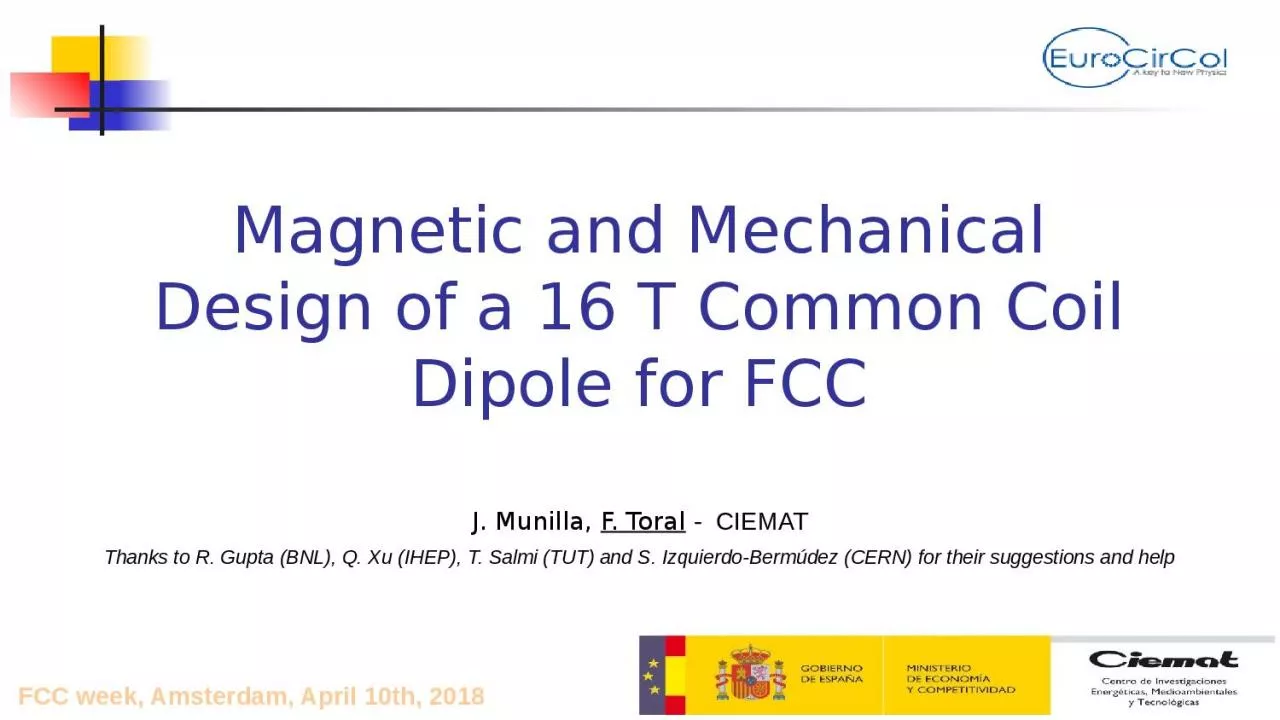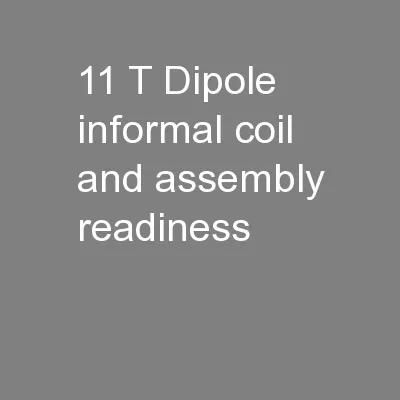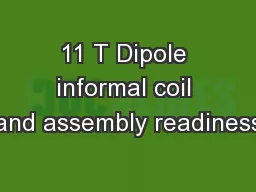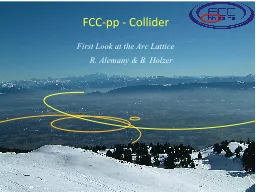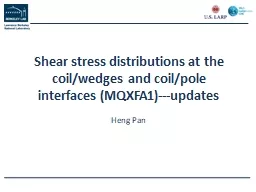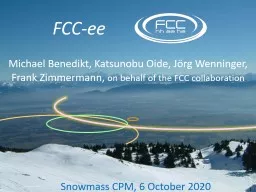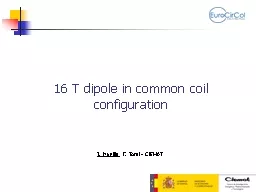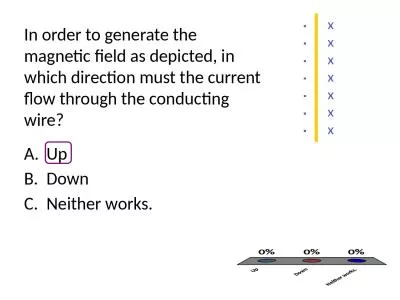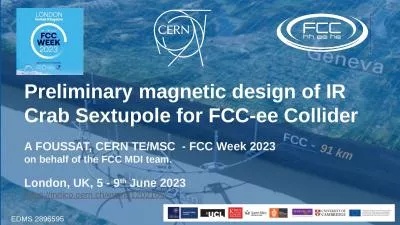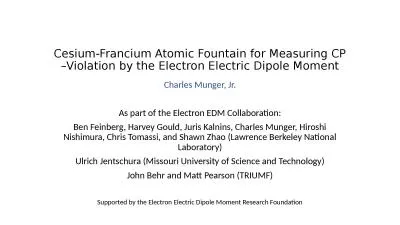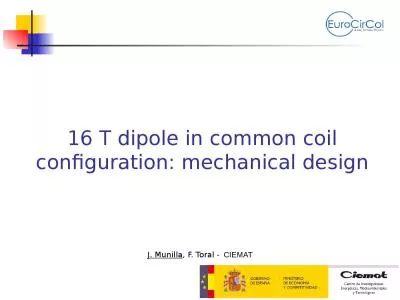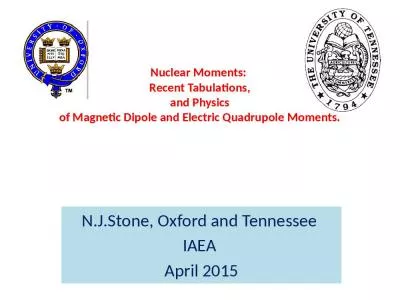PPT-Magnetic and Mechanical Design of a 16 T Common Coil Dipole for FCC
Author : joy | Published Date : 2023-11-12
J Munilla F Toral CIEMAT Thanks to R Gupta BNL Q Xu IHEP T Salmi TUT and S IzquierdoBermúdez CERN for their suggestions and help FCC week Amsterdam April
Presentation Embed Code
Download Presentation
Download Presentation The PPT/PDF document "Magnetic and Mechanical Design of a 16 T..." is the property of its rightful owner. Permission is granted to download and print the materials on this website for personal, non-commercial use only, and to display it on your personal computer provided you do not modify the materials and that you retain all copyright notices contained in the materials. By downloading content from our website, you accept the terms of this agreement.
Magnetic and Mechanical Design of a 16 T Common Coil Dipole for FCC: Transcript
Download Rules Of Document
"Magnetic and Mechanical Design of a 16 T Common Coil Dipole for FCC"The content belongs to its owner. You may download and print it for personal use, without modification, and keep all copyright notices. By downloading, you agree to these terms.
Related Documents

